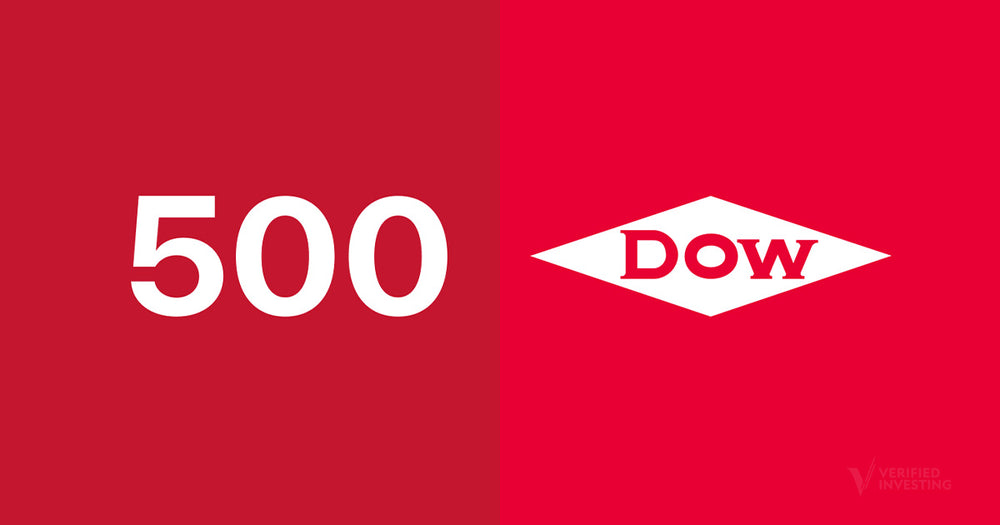What is the Difference Between the Dow and S&P

What are the differences between the Dow and the S&P 500? Both are major indices that track the share price of large US companies, but they do so in substantially different ways.
What Is The Dow?
The Dow Jones Industrial Average (DJIA) is a price-weighted index of 30 prominent companies chosen to represent major sectors of the US economy. The sectors represented in the Dow have shifted as the US economy's composition has changed.
The DJIA is no longer an “Industrial” index since heavy industry has ceased to be the primary driver of the economy. The Dow now covers every major business sector but Transportation and Utilities, which have their own indices (the DJTA and DJUA.) A common nickname for the DJIA (besides “the Dow”) is “the blue chips,” which can often be heard in business news reports.
How Are The Stocks In The Dow Chosen?
Unlike other stock indices, the Dow has no written eligibility rules. S&P Global, the owner of both the Dow and S&P indices, says there are “no quantitative rules” for choosing which companies are included in the Dow.
Some of the considerations when adding (or removing) a company from the Dow are:
- US-listed with a plurality of its business in the US
- Excellent reputation
- History of sustained growth
- Higher than average share price
- A major company within its sector
- Will help the Index maintain its desired exposure to that sector
- Be of interest to a large number of investors
- Not be a transportation or utility company
The Averages Committee of S&P Dow Jones Indices (a division of S&P Global) chooses stocks for inclusion and expulsion in the Dow. The Committee consists of five members: three chosen by S&P Global and two from the Wall Street Journal.
The Wall Street Journal was founded in 1889 by Charles Dow, Edward Jones, and Charles Bergstresser to cover business and financial news.
The absence of formal criteria for inclusion in the Dow gives the Committee some leeway in deciding if a particular company meets the index’s needs. Being a large and powerful company is not a free ticket to the Dow.
For example, Amazon was not a member of the Dow until February 2024. Since the Dow is weighted by share price, the 3:1 stock split by Dow component WalMart left the index underweight in its exposure to consumer retail. Amazon was added to the Dow to increase the sector’s weighting. Walgreens Boots, the Dow's least valuable component, was removed from the index to make room for Amazon.
Criticisms Of The Dow
One criticism of the Dow is that it is price-weighted instead of weighted by market cap. Another is that 30 stocks can’t truly capture the nature of the US economy (see Amazon’s late inclusion.)
The Dow's low number of stocks and price-weighting make it more volatile in the short term than larger indices such as the S&P 500.
What Is The S&P 500?
The S&P 500 tracks the 500 largest companies in the US. These 500 stocks account for 80% of the value of the entire stock market. Also known as “the broader market,” it is considered the most important stock index for tracking the US economy. The S&P 500 is a market cap-weighted index. This gives the largest companies more influence on the index’s average than smaller large-cap companies.
The S&P 500 doesn’t choose which companies to include and which to exclude to “balance” its results like the Dow. Any company that meets the requirements is eligible (as long as there’s room.)
How Are S&P 500 Stocks Chosen?
The S&P 500, unlike the Dow, has formal criteria that a company must meet to be considered for inclusion. These include:
- Being based in the US
- Trading on a major US stock exchange
- Having a market cap of at least $15.8 billion
- At least 50% of its outstanding shares are available for public trading
- Trading a minimum of 250,000 shares each month for six months prior to the evaluation date.
- Satisfying all SEC reporting requirements, including being current with annual and quarterly reports (8-K and 10-Q)
- Must be a corporation (or REIT) that has common stock.
The S&P 500 is usually rebalanced once per quarter, but sometimes the S&P Dow Jones Index Committee has to step in and take emergency measures. One example was New York Community Bancorp. NYCB remains one of the largest banks in the nation, but it no longer meets the criteria for staying in the S&P 500 after its implosion.
Criticisms Of The S&P 500
One criticism of the S&P 500 is that, as a market-cap-weighted index, mega-cap stocks like Apple, Microsoft, and Amazon cause it to overstate the effect the largest companies have on the economy.
Another is that, as an exclusively large-cap index, it misses the contributions of medium-cap and small-cap companies to the economy. There are other indices which investors can use to track these companies, some of which are offered by S&P itself.
How the Dow and S&P 500 Track Stocks Differently
A good comparison of how price-weighted and market-cap-weighted stock indices differ in ranking the same companies is to compare the top 10 companies in the Dow and S&P 500.
TOP 10 DJIA Companies (Price-Weighted)
- United Healthcare
- Microsoft
- Goldman Sachs
- Caterpillar
- Home Depot
- Salesforce
- Visa
- McDonald’s
- Amgen
- Traveler’s
TOP 10 S&P 500 Companies (Market Cap-Weighted)
- Microsoft
- Apple
- Nvidia
- Amazon
- Meta
- Alphabet
- Berkshire Hathaway
- Eli Lilly
- Broadcom
- Tesla